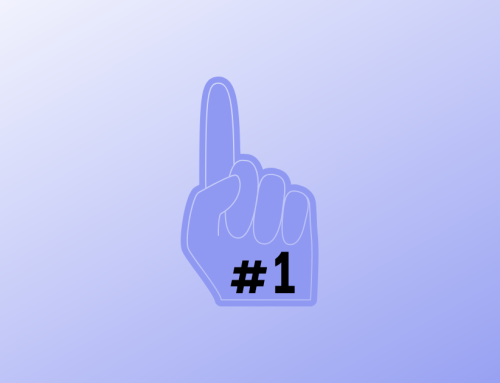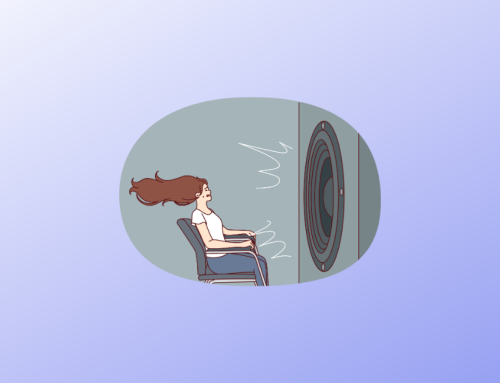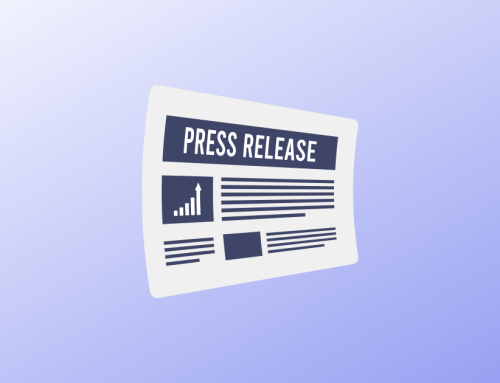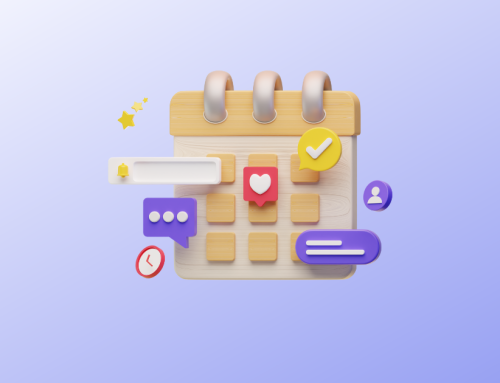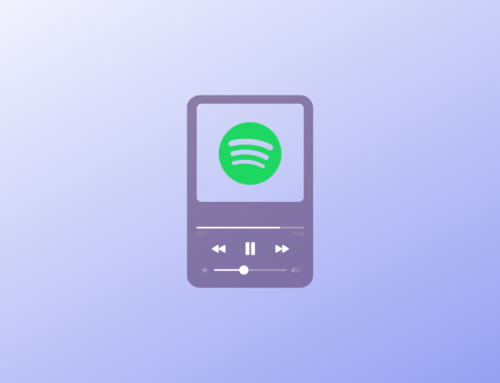The music business is built on collaboration. Whether you are thinking of a brand-new band supporting a headliner or two veteran artists joining forces to reinterpret a classic, cooperation makes for memorable music. At the same time, this collaborative nature can make it difficult to determine who deserves what share of royalties when a song is played.
In this guide, we’ll do our best to explain music royalties as simply as possible. Don’t worry, you’re not expected to memorize the entire article. Bookmark it to refer back to it whenever you’d like to clarify something.
Royalties: A Quick Definition
Let’s start with a quick definition of what royalties are. Legally speaking, a royalty is “a binding payment made to an individual or company for the ongoing use of their assets, including copyrighted works.”
Original songs are assets. Whenever you license another party to use your songs, royalties generate revenue to compensate for the use of the song. This applies to radio and TV play, streaming, as well as the use of your music in bars and restaurants.
To qualify for royalty payments, your music needs to be original, produced and copyrighted. Even today, royalty payments continue to be the primary form of compensation for musicians.
How to Copyright Music
Copyrights are one type of intellectual property. Copyrighting your music establishes you as the owner of a lyric or a composition. A simple way to think of copyrighting is telling the world that you own this song.
This may seem like a formality, but copyrighting protects your work. It is the key to ensuring that you get paid for your music. For the purposes of this guide to music royalties, we will consider U.S. law only. Under U.S. copyright law, creators assert exclusive rights to their original works. The law bars anyone else from using other people’s works without a paid-for license.
You can copyright music or lyrics or both. To qualify for copyright registration, your music needs to be produced in some way. For example, waking up with an idea for an award-winning song in your head does not qualify. However, as soon as you write the lyrics in your notebook, they are eligible for copyright.
Likewise, you can register your ownership of a piece of music as soon as it’s been recorded. Playing the music on your piano or guitar and recording it on your cell phone is enough to qualify. Copyright registration doesn’t require a full-scale studio production.
Just like the song idea in our example didn’t qualify for copyright registration, there are a few more exceptions. A chord progression doesn’t qualify, no matter how unique or captivating. Nor does a song title.
If you have a song to assert your rights over, you can register it with the U.S. Copyright Office for a fee. Securing copyright is the first step towards generating royalty payments, but there’s more to the process.
Types of Music Copyrights
Time to get a bit more specific and look more closely at the different types of music copyrights. Every piece of music carries two distinct kinds of copyright: one copyright applies to songwriting and another to sound recording.
Songwriting Copyright
The copyright for songwriting or the composition of a certain piece of music covers notes, lyrics, melodies, rhythms, chords, and harmonies. This is usually owned by songwriters and their publishers.
Remember, you can assert your copyright as soon as you have captured your work somewhere tangible. Your notepad counts as much as a tweet or an Instagram post. Traditionally, sheet music would have been the medium of choice, but it’s not a requirement.
Songwriting copyrights are also known as publishing copyrights. Both terms refer to the same set of assets. The only difference is in the ownership. Independent songwriters or musicians just starting their careers might not yet work with a publishing company. Instead, they are collecting their own publishing or songwriting royalties. More about the mechanics of that below.
Working with a publisher has advantages. Publishers actively look for opportunities for songs to be played or otherwise used to generate revenue. In return for their services, they keep a share of the royalties. What percentage of royalties a publisher retains depends on the contract between the musician and their publishers. In any case, the goal should be to benefit both parties.
Sound Recording Copyright
This is where the terminology starts to get a little complicated. The sound recording copyright is often referred to as the master copyright. This copyright belongs to the owner of the master sound recording of a song or other piece of music. It’s worth keeping that in mind when you are getting into the details of royalty payments.
The master copyright is usually held by the party who paid for the recording. That could be the artist or the record label. In some instances, this copyright is owned by the recording studio. That’s the case if the artist could not pay for studio services, and the studio took the financial risk instead.
How Songwriting and Sound Recording Copyright Overlap
Having separate copyrights for songwriting and sound recording may seem overly complicated. But the separation actually helps when it comes to creating new recordings of existing songs.
When an artist wants to record a cover version of a song, they generally use the lyrics as well as the music. Those are covered by songwriting or publishing copyright. Because they are creating an entirely new recording of the song, using different musicians, they create a new sound recording. This new sound recording would then be subject to its own copyright.
Here is an example: For the soundtrack of the 2021 movie Flag Day, Eddie Vedder recorded his version of R.E.M.’s Everybody Hurts. The copyright in question here is only the songwriting copyright of the original song. The resulting cover needs to assert copyright of its own.
Different Types of Music Royalties
So far, we have referred to music royalties as one entity. However, there are different types of royalties, and it is important to understand the distinctions before we consider how they are paid out.
The four main types of music royalties include:
- Mechanical Royalties
- Performance Royalties
- Synchronization Royalties
- Print Royalties
Mechanical Royalties
The term “mechanical royalties” was coined at a time when music had to be recorded on a physical device, such as a cassette, vinyl, or CD. Every time, a song is reproduced physically or digitally and distributed, mechanical royalties become due to the owner of the publishing copyright.
Today, mechanical royalties also include royalties generated on digital publishing platforms. In fact, due to the rising popularity of streaming, these royalties have become more important for artists than ever before.
The federal U.S. Copyright Act determines at which rate mechanical royalties are paid. Whilst individual royalties and payments vary, streaming royalties are usually in the region of $0.06 per 100 streams. Physical purchases like CDs or records and permanent downloads from platforms like iTunes generate $0.09 per song.
Do artists receive the entire payment? Not necessarily. In today’s complex music industry, there are often several other parties involved. More about that is below.
Performance Royalties
Performance royalties become due to songwriters and publishers every time a piece of music is played in a commercial environment. Public performances of a song range from multi-day music festivals with thousands of fans singing along to background music in your favorite coffee shop.
Like mechanical royalties, performance royalties can be divided into two categories. There are those generated digitally via streaming services and more traditional broadcasters. The latter include terrestrial AM/FM radio stations, TV channels, clubs, venues, restaurants, and bars, among others.
Digital Performance Royalties
We’ll start by looking more closely at the digital side of public performance royalties. Streaming services pay out through a so-called “all-in royalty pool” that covers mechanical as well as performance royalties. Set up by the Copyright Royalty Board (CRB), the pool determines what any streaming service has to pay to songwriters and their publishers.
The streaming service does not pay artists directly. Instead, the public performance portion of the all-in royalty pool is passed to a performance rights organization (PRO). The PRO allocates royalties to publishers and songwriters on a pro-rata basis based on their share of content.
Traditional Performance Royalties
Outside of streaming, public performance royalties are based on a reporting system.
Broadcasters, including radio and TV, apply for a blanket license to play music with their PRO. Once granted, the license allows the broadcaster to publicly play virtually every piece of music ever recorded. The broadcaster must report to the PRO which pieces of music they played. The PRO will then allocate royalty payments to songwriters and publishers based on that.
When musicians perform at a venue, they generally need to submit a set list. The purpose of that list is to ensure public performance royalties can be calculated correctly. Like the broadcaster, the venue sends the data to the PRO where royalties are determined. The PRO then pays the songwriter or their publishing company. In many cases, the performing artist and the songwriter are the same people.
Radio: A Special Case
Terrestrial AM/FM radio stations are exempt from paying performance royalties to sound recording owners with master copyright. They do have to pay this type of royalty to songwriters or publishers, though.
Digital internet radio, satellite radio stations, and cable radio are all subject to different rules. Those broadcasters must pay public performance royalties to master owners. To facilitate the collection of these royalties, the American government established SoundExchange as a collection agency. To be able to play music, digital radio platforms need to apply for a license from SoundExchange.
Synchronization Royalties
When copyrighted music is paired – or synchronized – with visual media, synchronization (sync) royalties are generated for the recording artist and other parties.
Sync licenses are generally sold by music publishers. Before purchasing a sync license, the license holder needs to clarify whether they are buying a license that covers both songwriting and sound recording rights or not.
Across the music industry, the term sync license can be applied to either a combined license or one that only covers songwriting royalties. The distinction not only influences the cost but also determines what the license holder can do with the music.
A sync license covering songwriting royalties only allows the purchaser to use the lyrics and the music but not the actual recording. This would work well if, for example, a filmmaker is planning to ask another artist to cover an existing song. Eddie Vedder’s cover of R.E.M.’s Everybody Hurts for the movie Flag Day is one recent example of this scenario.
If the goal had been to use R.E.M.’s original recording, the film’s producers would have had to secure a license covering the sound recording as well.
Sync licensing differs substantially from public performance licensing. Performance licenses are blanket licenses allowing the license holder to use almost unlimited pieces of music. Sync licenses are specific to a certain song or another piece of music.
Print Royalties
Few recording artists collect print royalties. However, this type of music royalty is one of the biggest income streams for film composers and classical composers.
Print royalties are generated whenever a piece of copyrighted music is transcribed to a print medium, for example, sheet music, and then distributed by a music publisher. Print music royalties are not limited to hard copy, analog sales, though. Selling sheet music online also generates this type of royalty for the respective composer.
How Music Royalties Are Collected, Calculated, and Paid Out
As a recording artist or a songwriter, you will only get paid for your music if you have followed a series of steps. Not all of them will apply to all artists, but we have listed to most important ones here.
Asserting Copyright for a Song
One of the first steps towards getting paid for your music is to protect your copyright as the creator of this music.
How soon should artists register their copyright? Unfortunately, there is no hard and fast answer to this question. As soon as an artist writes down lyrics in any way, including a social media post or a page in a notebook, their copyright can be registered.
Registration with the U.S. Copyright Office is not difficult, but there are registration fees to be paid. You need to weigh those costs against the potential of someone else writing a similar song and cashing in on it. As soon as a piece of music is copyrighted, the original owner is fully protected. Should another party try to infringe on their copyright, they can even sue to assert their claim.
Get Featured on Streaming Platforms
Having asserted copyright over music, lyrics, and a sound recording, it’s important to ensure as many people as possible can listen to it. Just a few decades ago, the best way to be heard was to sell records and CDs. Today, streaming services have all but replaced physical sales.
By 2019, less than 25% of all global recording revenue was generated by physical sales. In developed digital markets, the market share was as low as 10%.
Music recordings these days are being licensed to streaming platforms to generate royalties. To achieve that, most recording artists and record labels work with distributors or aggregators. There are genuine platforms that allow artists to distribute directly, for example, SoundCloud. However, the vast majority of streaming platforms work through distributors.
Working with a distributor allows artists to ensure their song is available to all potential listeners, across all potential platforms. Availability and visibility are the keys to initiating downloads. Without either, artists can’t generate royalties.
Streaming platforms prefer working with distributors because this path tends to minimize their workload. Music is uploaded in standard formats, and payouts can be equally optimized.
Join a Performing Rights Organization (PRO)
We have mentioned PROs a few times already in this guide. Here is a more detailed look at their role within the music industry.
PROs are responsible for collecting performance royalties, including songwriter and publisher royalties. In the United States, the PRO market is split between three players. Broadcast Music, Incorporated (BMI) and the American Society of Composers, Authors, and Publishers (ASCAP) are both non-profit organizations any artist can join. Most musicians start out with one of those PROs.
SESAC is an invitation-only PRO with a much smaller market share around 10% of the country’s performing artists. All three PROs require artists to register their songs to collect songwriting and publishing royalties.
Register with SoundExchange
SoundExchange is the designated royalty collection agency for digital performance royalties. The agency was set up by the United States government to manage royalties generated from airplay on digital radio platforms.
To take advantage of these royalty payments, recording artists and their labels as well as session musicians need to register with the agency. Without registration, you may miss out on your royalty payments.
How to Calculate Music Royalties
How music royalties are calculated differs between types of royalty, and it also varies from artist to artist. Here is a breakdown of the individual calculations.
Calculating Mechanical Royalties
In the United States, mechanical music royalty rates are regulated by the government. Every time a sound recording is either downloaded or pressed onto a CD, the owners of the composition earn $0.091 for songs of up to five minutes in length. Longer compositions are paid at a rate of 1.75 cents per minute. These royalties are generally paid out by an artist’s publisher or a publishing service like Songtrust.
Next in line are the artists performing the song. How much you get paid from the sale of a CD depends on your “artist clout”. It is basically determined by your pulling power when it comes to generating sales and airplay. As a new artist, your rate may be as low as 10%, but industry experts generally put it between 13 and 16%. Those with a little more experience and more than 100,000 sales under their belt can command 15 to 18%. Household names at the top of their game can make as much as 18 to 20%.
Major record labels tend not to go higher than that, but independent labels have been known to give as much as 50% to the artist. It all depends on the terms of your contract and whether digital sales are considered sales as opposed to licensing.
The situation is different for artists who are releasing their music independently from labels. Their distribution services tend to pay out around 90% of what they are owed.
Mechanical Royalties from Streaming: Another Special Case
Streaming generates both mechanical and performance royalties. We’ll cover the latter in the next section.
Calculating mechanical royalties from streaming platforms is less than straightforward. In the U.S., platforms like Spotify follow the guidelines set by the Copyright Royalty Board (CRB). The CRB rules combine mechanical and performance royalties in an all-in royalty pool.
Under those regulations, streaming services need to perform three different calculations and then pay out whichever is the greatest amount.
Here are the options:
- All-in royalty rate: 11.8% of the service’s total revenue; with a view to being increased to 15.1% in 2022.
- Minimum all-in royalty rate: 21-22% of what streaming services pay top record labels; set to increase to 26% in 2022.
- Subscriber-based rate: $0.50 per subscriber.
Once the amount has been determined, streaming platforms remove the performance royalties which are forwarded to PROs. When mechanical streaming royalties are paid out, they don’t go directly to the artists. Instead, they are collected on behalf of the copyright holders by the Harry Fox Agency (HFA), which then distributes them.
Claiming Public Performance Royalties
Every time a song is played in a public setting, public performance royalties are collected by a PRO. The PRO distributes the funds to the artists who have registered with the organization.
Performance royalties are split 50/50 between songwriter and publisher royalties. Songwriter royalties are automatically paid out to all songwriters credited for a particular composition. No contract or record label influence can change that. But songwriters need to ensure they are properly credited.
The remaining 50% of the performance royalty goes to the publishing company an artist is signed to. What about artists who are not signed to a publishing company? They would be well advised to use the services of a Publishing Administration Company. This company can collect the publishing royalties share of the performance royalties on the artist’s behalf. Otherwise, artists may be missing out.
How Digital Radio Platform Royalties Are Calculated
Once registered on SoundExchange, artists can start collecting royalties generated from airplay on digital radio platforms.
SoundExchange bases its payouts on the number of times a song was played. Royalties are paid according to the following breakdown:
- 45% to featured artists
- 5% to non-featured artists
- 50% to the rights owner of the master sound recording
Who Receives Royalties
By now, it should be clear that the music industry relies on an intricate network of players to generate revenue and royalties. In this section, we are changing our perspective and taking a look at the individual parties that receive royalties.
Some of those will be responsible for collecting royalties but not necessarily keep the entire amount. Others are the final destination of the funds.
Songwriters
Songwriters receive a share of three types of royalties:
- Mechanical royalties
- Performance royalties
- Sync licensing royalties
Properly credited songwriters are considered a part of the master sound recording of a song. Like recording artists, this entitles them to a percentage of all royalties incurred on that side of the industry.
In addition, songwriters also receive their part of the writers’ share. To collect a percentage of the publisher’s share of royalties, they need to have a publishing company behind them or use a specific service to prevent missing out.
Record Labels
In a typical music production scenario, record labels finance the production and the marketing of an album. They shoulder the biggest economic risk and take a large stake in the expected master royalties.
As a result, they take a large share of all royalties on the sound recording or master side:
- Streaming (mechanical) royalties
- Digital performance royalties
- Sync licensing royalties if those include a master use license)
Record labels generally split these royalties with the recording artists signed to them. Plus, songwriters also receive a share of those royalties as they are considered part of the master recording (see above).
Recording Artists
The music industry considers recording artists to be part owners of the master recording of a song. As a result, they are entitled to a share of any royalties generated in relation to the master sound recording.
They are entitled to a share of the following royalties:
- Streaming (mechanical) royalties
- Digital performance royalties
- Sync licensing royalties if those include a master use license)
The final percentage depends on individual contract agreements between artists, record labels, and distributors. Both featured and non-featured artists are considered recording artists in this context.
Publishers
Music publishing companies collect “the other 50%” of the performance and mechanical royalties that are not allocated to songwriters. However, this doesn’t mean they keep the entire amount.
Which percentage publishers keep depends on their contract with the songwriters. The final amount depends on the extent of the publishers’ work in promoting the song, maximizing and collecting any composition royalties as well as administrative services.
In some cases, publishers will also share royalties with other publishers. This happens regularly when a larger, international music publishing company provides services to a smaller entity.
Distributors
Simply put, distributors, like LabelGrid ensure that a song is seen and heard on digital streaming platforms. They ensure a song is available on all platforms and is featured prominently on their apps, websites, and other digital content. Plus, distributors are also responsible for collecting streaming royalties on behalf of the artists they represent.
Some distributors take a percentage of the royalties. Others base their contracts on a flat fee. In most scenarios, their share is limited to royalties generated from digital streaming.
PROs
PROs have a similar role to distributors with one distinction: whilst distributors work on the master recording side of the industry, PROs are on the composition side.
They collect performing royalties on behalf of all involved parties and allocate them accordingly. For their services, they collect a small percentage of those royalties to cover their costs. Most PROs cultivate a network of PROs in other countries to enable them to cover the entire world on behalf of their clients.
In many countries, the entire music industry is served by one single PRO. However, in the U.S. artists can choose between two or hope to be invited to join the third, more exclusive PRO.
Licensing and Synchronization Companies
Songwriters, music publishers, and PROs all represent the pipeline of royalties on the songwriting and composition side of the industry. On the other side sit recording artists, record labels, and distributors.
Licensing and sync companies create a bridge between the two sides. They work with either party to place a catchy song in the next academy-award-winning movie, for example. Movie producers may hire sync companies to find the perfect song for a specific scene.
However, artists or record labels looking to promote a song could also use a sync agency to approach movie production companies. For their services, these companies receive a percentage of the licensing royalties or fees they handle.
Final Thoughts
We started this guide by saying that the music business is built on collaboration. The notion of collaboration may conjure up images of a surprise artist walking onstage to join a performer. But it also applies to the business side of the music industry.
To produce and release a hit album that generates royalties for years to come, more than a handful of players need to work together. Their interests will not always be perfectly aligned, but only collaboration will lead to truly memorable music.

